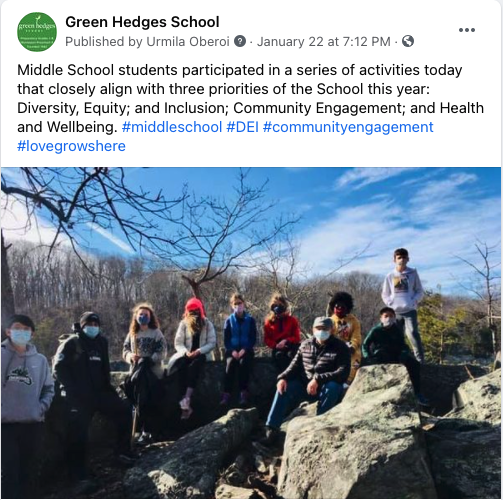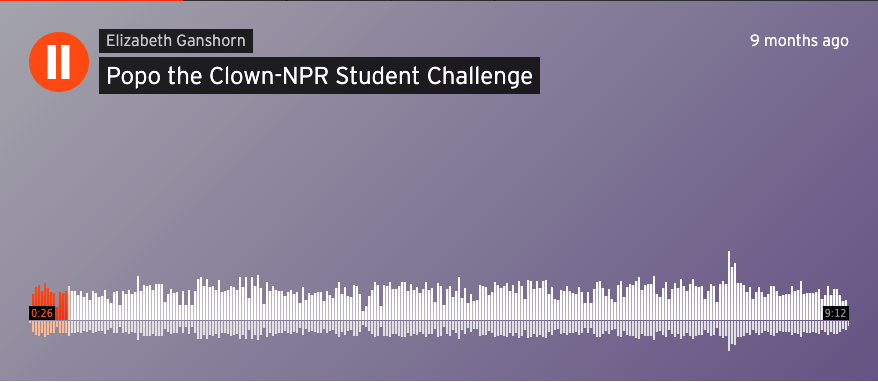The COVID-19 pandemic created several unexpected shifts in how we use digital and social media. With most of us staying home and spending more time on social media, eCommerce sales went through the roof in 2020. The word “Zoom” became part of our everyday language as video conferencing became the norm for how companies, brands, schools, family and friends connected with each other.
2020 has also been an unpredictable year forcing school marketers to figure out how to connect with and influence prospective families. This year, as schools and communities move with equal uncertainty into school openings, vaccination roll-outs, business reopening and more, it’s clear that the digital and social media lessons of the past year will continue into 2021.
Schools need to develop creative strategies, human-centered ways to reach prospects. There are several trends to know and adopt for 2021.
Embrace live-streaming.
Throughout the pandemic people have been unable to attend live events and instead are participating in virtual classes and workshops and tuning into live-streamed concerts, and live videos from celebrities and more. Live viewing on Facebook spiked by 50% during lockdown periods, and, on Instagram, live viewing surged 70%. TikTock use shot up as well, a trend that we will most likely see an increasing trend in 2021 (SocialMediaToday).
If you offer in-person events, or when you return to in-person events, use this trend to better engage prospective and current families by live-streaming an Open House, musical events, speaker series, travel programs relating to students, etc.
Focus on being socially conscious.
Schools, like brands, must dig deep to learn how to thrive during rough times. It’s not just about making a sale or recruiting a prospective family or student. According to Deloitte Insights, brands need to be “deeply attuned to why they exist and who they are built to serve.”
In 2021, there is an overarching emphasis on brands doing good things to connect with their consumers. As the world becomes a more fragile place, people are placing an emphasis on finding brands that are more socially conscious- and cause-driven. Talkwalker and HubSpot report a significant increase in the trend for Gen Z who, throughout 2020, have had an impact on politics, education, mental health and the environment.

As Generation Alpha comes into play (people born between 2010 and 2024), it’s time to think about what your school can do digitally to support this effort and demonstrate that education goes beyond the traditional classroom experience.
Highlight your school’s social justice programs online. Programs that celebrate causes such as Black History Month (February), Women’s History Month and National Invest in Veterans Week (both in March), National Volunteer Month (April), and National Preservation Month (May) are present-day issues that will connect with your Gen Z or Gen Alpha students. What virtual events is your school offering this year that could be shared with a prospective or accepted family audience? It can be an event, such as a virtual book club offered by a faculty member, a resource list, a Zoom evening with alumni who are veterans, etc.
Zero in on visual search for added SEO.
“Visual search is no longer a theoretical concept,” says Jeff Hunt, Founder and CEO of Snap36. Visual search searches through real-world images, not text. “Early adopters that redesign their websites to support visual and voice search will increase their digital commerce revenue by 30%.” Pinterest and Amazon have adapted their websites to aid in visual search and achieved notable increases in viewers landing on their sites. Since 2018, Pinterest has received over 600,000 visual searches per month.
Visual search can be very useful to schools when parents are looking for reasons to consider your school. Populate your site pages with high-quality images that not only reflect your school but also tell a story that words alone cannot.
Google Lens enables viewers to search for whatever they can see. Ensure that your website images are optimized properly as visuals will become significantly more important for SEO. Do this by including a sitemap for all your images on the website and providing descriptive alt-text for all your images.
Digital newsletters and podcasts are on the rise.
Studies show that 55% of Americans now listen to podcasts, while digital newsletter mentions were up 14%. Advertisers are now spending more dollars on these tactics, which suggests the continued value of these tools for communications — and of their value for independent school marketing.

Both podcasts and digital newsletters, notes Social Media Today, offer convenient and readily-available content for brands to connect more deeply with consumers while providing a more intimate way to stay in touch. If your school provides prospects with relevant information through newsletters that are followed up with informative, entertaining and engaging podcasts, you’ll be offering these people valuable resources that can ultimately create a strong connection with your school, especially during difficult times.
Use short-form video.
The latest trend, especially amongst Gen Z, is short-form video. These videos influence purchasing behavior, decision making, evoke emotion and are budget friendly. If done right, short-form video can influence prospective students and address your target audience’s pain points with solutions that can make your school top-of-mind for parents and students.
Whether you use TikTok, Instagram Reels or Facebook and Instagram Stories, short-form video will add valuable content to your school’s social media tool box. And, if you haven’t yet heard of Triller, now is the time to get on the bandwagon to entice those musical theater prospects or future students who love to break out in spontaneous song.
How can we help you create your most strategic and effective marketing plan yet? Contact us.
Gerri Baum is Digital and Social Media Lead for Kalix Marketing.


